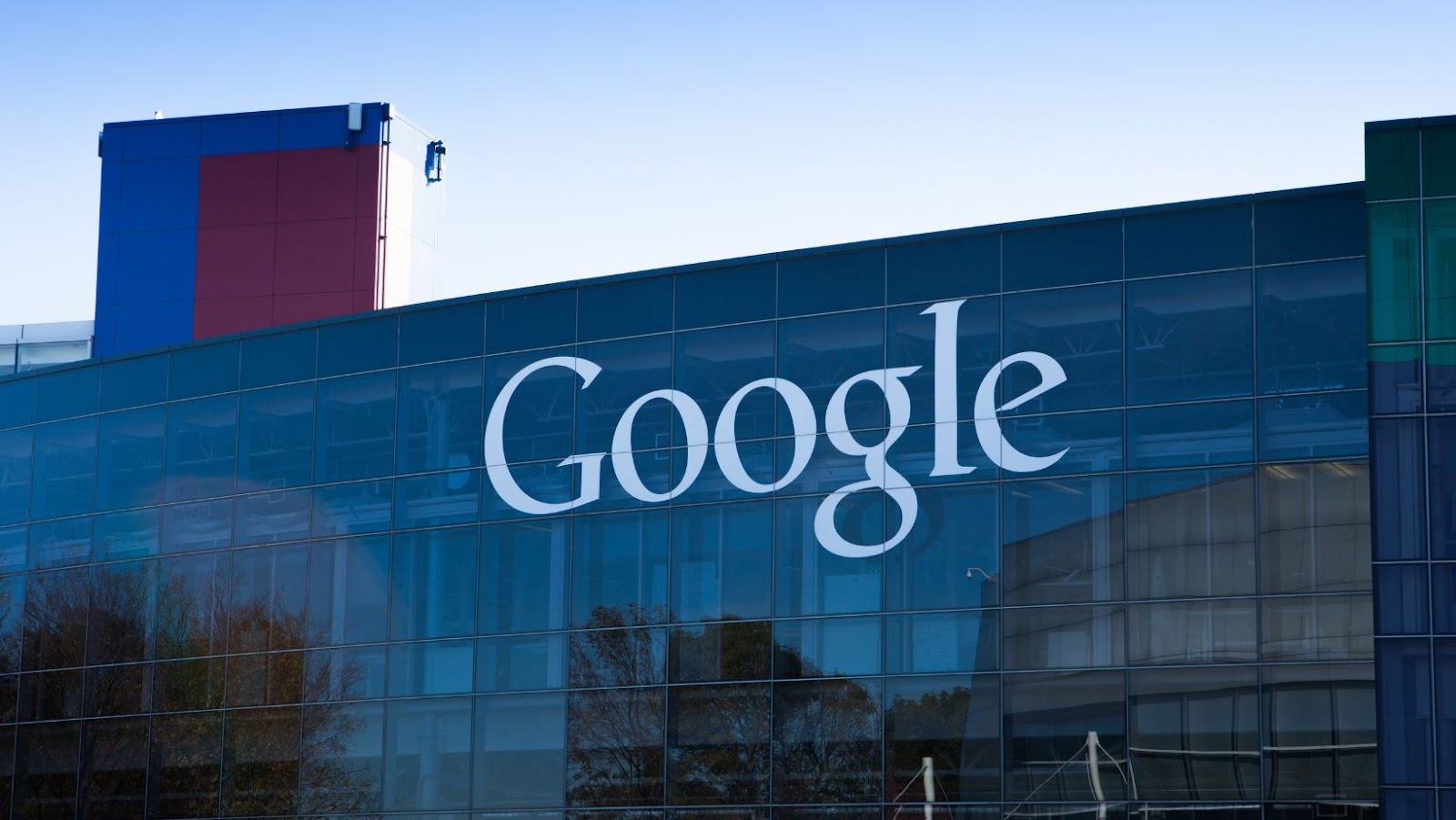The development of Google, Amazon, Meta and Microsoft’s collaborative effort to create a fiber-optic web of power has the potential to revolutionise the internet and the global economy as we know it. This fiber-optic web could provide unprecedented internet use speeds and increased data transfer security and reliability. It could also have profound implications for digital networks and commerce’s future. In this article, we will explore the implications of a fiber-optic web of power, and the potential opportunities and challenges it presents.
Definition of Fiber-Optic Web
A fiber-optic web is a network of optical fibers that can send large amounts of data over long distances in a very short time and with incredibly low levels of latency. Several types of fiber-optic webs are available on the market, with different speeds and data transfer capabilities suited to different applications. As a result, fiber-optic webs have the potential to revolutionise the way we communicate, create new business opportunities and applications and unlock entirely new realms of innovation across an array of sectors.
Google, Amazon, Meta and Microsoft have all announced plans for developing their fiber-optic webs to leverage it as a source of connectivity for their various services. These companies seek to use the speed and reliability offered by fiber-optic networks to ensure high quality service offerings for consumer’s devices. The impact this technology can have on internet access long term cannot yet be determined but could lead to an undreamed level of accessibility among large populations around the globe if implemented effectively.
Overview of How Fiber-Optic Web Works
Fiber-optic web (or FOW) is a promising new technology that allows people and organisations to access a high-speed, low-cost, low-power internet connection in metropolitan areas worldwide. Unlike traditional coaxial or copper cable technologies, fiber optic cables use bundles of thin strands of glass, each strand carrying light pulses. These light pulses – called photons – travel much farther than traditional signals sent over copper wires. Additionally, since pulse frequencies in fiber optics are very small and don’t generate any electricity, they can be highly efficient in delivering data with no radiation or electromagnetic interference.
A fiber-optic web is a network of optical fibers that can send large amounts of data over long distances in a very short time and with incredibly low levels of latency.
The potential implications of such a ubiquitously available technology are vast – both technologically and socially. On the technological side of things, with FOW it’s possible to reach speeds of up to 100GB/s – which is more than enough for some ultra HD streaming services and intensive gaming experiences. Additionally, FOW could radically reduce latency allowing Google Amazon Microsoft Meta to build a web of ever-connected devices with near instant response time. This could also have implications for other complex distributed systems such as self driving cars and intelligent robots needing optimal performance for their complex processes.

On the social side of things FOW offers an unprecedented ubiquity which will likely lead to an increase in economic activity given the rise of ecommerce services dependant on high speed internet access as well as reduce income inequality due to the access it provides users from lower income backgrounds who may not have had access before due these costs being too prohibitively expensive previously .
Google’s Role in Fiber-Optic Web
Google has been leading the way in fiber-optic web technology, with plans to use its massive data centres to create a fiber-optic web of power. This could be revolutionary for the tech industry, leading to faster internet speeds, increased streaming capacity, and virtual private networks for businesses. In this article, we will explore what this could mean for Google, Amazon, Meta, and Microsoft in the future.
Google’s Current Fiber-Optic Projects
Google is part of a consortium of technology companies, such as Amazon, Meta and Microsoft, that have been actively exploring the potential implications of new fiber-optic web services. The idea is to create a powerful inter-connected web that would enable very fast and reliable utilisation of the web.
The consortium has launched several pilot projects over the last few years to test the feasibility of delivering ultra-high speed data services through fiber. Google is at the forefront of this effort and has been actively developing technological innovations for utilising fiber-optic lines to transmit data.
Google’s current fiber-optic projects focus on four areas: 1) providing broadband internet access to homes and businesses, 2) creating smart cities using digital infrastructure and artificial intelligence, 3) enabling improved mobile networks through streamlined fiber deployment and 4) creating next-generation data centres with increased capacity and more robust security features.
These projects would bring higher speeds to users and open up opportunities for innovative developments that take advantage of optical digital technologies. Google’s vision is to leverage its experience in building resilient global infrastructure and cloud computing technologies to deliver complete connectivity solutions tailored specifically to each customer’s needs.
Google’s long-term plan is to develop an interconnected network by investing in strategic acquisitions, competitively exploring additional partnership opportunities to expand their potential market share in this emerging field. Ultimately, Google’s role in high speed fiber internet will be significant moving forward as their projects continue pushing for innovation in this space.
Potential Implications of Google’s Fiber-Optic Projects
Google has begun major fiber-optic projects in different parts of the world. This technology can revolutionise how data and information are transmitted across continents and between users, allowing people to access faster internet speeds at much lower costs. This could potentially open new opportunities for Google, Amazon, Meta and Microsoft to create a fiber-optic web of power, through which they could manage the flow of vast quantities of data and international telecoms networks more efficiently.
Fiber-optic connectivity provides much greater bandwidth than traditional copper cables, and it is expected that this increased speed will help reduce latency – the time it takes for data to travel from one point to another across a network – by up to 60%. By replacing copper cables with fiber optics technology, this latency issue can be virtually eliminated – practically ensuring a lag free internet experience for consumers worldwide.
By creating a global interconnected system through their respective networks powered by this improved technological infrastructure, Google, Amazon, Meta and Microsoft will be able to draw upon each other’s strengths to create an infrastructure that can adapt quickly to shifts in demand as well as provide additional redundancy within the network in case of outages or emergencies. In addition, because packet switching capabilities are also improved with fiber optics technology over traditional cable systems, network congestion can be minimised while improving overall quality control measures on internet traffic automatically.
In short, the implications of Google’s fiber-optic project are far reaching and its successful implementation may well herald radical changes in how information is transmitted around the globe. Moreover, these projects have significant subversive potential from an economic and political perspective.
Amazon’s Role in Fiber-Optic Web
Amazon has been one of the most active tech companies developing fiber-optic web. This technology has the potential to revolutionise how the web works and could create a new era of high-speed data transmission. Amazon has been investing heavily to create a fiber-optic web of power that could help them compete with Google, Microsoft, and Meta. Let’s explore the potential implications of the fiber-optic web for the future.

Amazon’s Current Fiber-Optic Projects
Amazon is actively involved in expanding their access to the world’s best and most reliable fiber-optic networks. They have built a massive network of private dedicated fiber-optic cables, each connecting to specific data centers worldwide. By leveraging these private lines, Amazon can guarantee faster, more reliable connections than the public internet.
Amazon is also working with other large companies like Google, Meta and Microsoft to develop an even bigger global network of interconnected fiber-optics. Their goal is to form a ‘web of power’ which will allow information to flow quickly, securely and efficiently from one point on the internet to another. By developing their fiber-optic infrastructure, Amazon can control their data more.
Furthermore, by partnering with other tech companies, Amazon will benefit from each others’ resources and capabilities to create an even more robust network of connectivity than would be possible. As technology continues to evolve rapidly, Amazon’s role in creating this cutting edge infrastructure is paramount for its growth and success into the future.
Potential Implications of Amazon’s Fiber-Optic Projects
With the speedy technological developments, Amazon is rapidly ramping up its fiber-optic projects. It has strived to provide its customers with a faster, swift and more efficient data-transmitting medium through fiber-optic cables rather than relying on third-party providers. Such a move promises to bring drastic changes in internet speeds and power in terms of data transfers, inevitably impacting global economies positively or negatively.
As Amazon worms their way into creating a seamless connection across the Globe via fiber-optic web services, it stands to pique the curiosity of competition managers such as Google, Microsoft, Meta and other industry leaders to understand what potential implications these projects pose on future businesses.
In addition to speed benefits that directly help reduce customer latency issues, these fiber infrastructure investments offer an array of other opportunities and potential consequences for the web provider’s future operations such as increased flexibility when it comes to consolidating data centres or providing telecommunication services like voice solutions. Furthermore, such activity could create big shifts in the structure of existing organisations due to increased competition levels among players in this space who ultimately have gained entry when earlier it was limited only to large telecom companies leading to laxity in regulations due more monopolistic practices being witnessed earlier with such infrastructure investments.
Amazon is actively involved in expanding their access to the world’s best and most reliable fiber-optic networks. They have built a massive network of private dedicated fiber-optic cables, each connecting to specific data centers worldwide.
Further upcoming changes through AWS pave way for Amazon leverage their current market position essentially boosting their cost efficiency scenario over other tech companies thus gaining additional market share via increased presence at last mile connectivity which would further contribute vigorously towards enhancing customer experiences and productivity offerings notably improving user engagement levels which lends itself well with AWS Cloud operations along with other related services that can be launched economically leveraging on network development activities ongoing currently by Amazon.
Microsoft’s Role in Fiber-Optic Web
Microsoft has already made its mark in the tech world with its integrated cloud services, digital work environments, and software products. However, with the development of a fiber-optic web, Microsoft can potentially make an even bigger impact on the tech industry by leveraging its resources. In this article, we will explore the role that Microsoft plays in developing the fiber-optic web and what implications this may have for the future.
Microsoft’s Current Fiber-Optic Projects
Microsoft is a leader in the fiber-optic web of power, working alongside Google, Amazon, and Meta. Microsoft’s current fiber-optic projects include a partnership with Facebook and AT&T to deploy fiber-optic networks in certain regions of the US. Microsoft is also experimenting with edge computing through its Azure data centers to expand the capacity of its cloud computing network. Additionally, Microsoft has adopted the Open19 standard for data center infrastructure, enabling low-cost equipment for rapid deployment in remote locations using fiber optics for access.
In terms of optical broadband internet service delivery, Microsoft has also been involved in a few projects here. The first large-scale effort was Project Plainsboro, a joint effort between Microsoft and Verizon Communications. Through this project residential customers in Nebraska received access to high speed broadband internet via optical fibers spread across 200 miles of rural terrain. The goal was to enable more areas to access similar services as those already available in major cities like New York or San Francisco.
Microsoft’s current efforts are directed towards harnessing 5G network technology to enhance optical fibre networks. As a result, they may offer ultra-fast internet communication speeds at much greater distances than currently achievable with fibre optics alone. Such technologies could eventually lead us towards the age of nationwide fibre optic networks offering unprecedented speeds for data transmission over any kind of application that requires massive amounts of bandwidth such as streaming TV series or playing advanced video games from remote servers over the network without suffering from buffering issues due to inadequate bandwidth availability at any given location on the web .
Potential Implications of Microsoft’s Fiber-Optic Projects
Microsoft plans to construct over 4,000 miles of new fiber-optic cable, greatly increasing data speeds and drastically reducing latency. Such investments in network infrastructure could have far-reaching implications in upcoming years, as the interconnectedness enabled by these high-speed networks could accelerate the development of new technologies and push the boundaries of what has previously been thought possible.
The intense increase in speeds offered by Microsoft’s project could significantly improve computing capabilities across many industries. Businesses and organisations may see increased productivity due to reduced time spent exchanging information between different departments or locations. This effect could be further amplified if other forms of communication are used in addition to fiber optics, allowing for simultaneous exchanges between multiple entities that would otherwise have experienced delays or inconsistencies due to location or connection type differences.
Additionally, Microsoft’s fiber-optic projects may be instrumental in bridging more countries with faster internet connections than ever before. This can lead to greater global connectivity through increased access to services such as broadband, television, multimedia applications, voice communications and even gaming tournaments with distant competitors worldwide.
Finally, and perhaps most importantly, Microsoft’s investments may open up more opportunities for further innovation while also reducing costs associated with technology development since it can take considerable time and money to build a reliable fiber optic installation from scratch. Furthermore, as these projects become widespread across markets and regions worldwide there can be an unprecedented growth rate of digitised data access which will initiate a competitive atmosphere among various internet providers and allow companies like Microsoft to offer their services over superior networks at competitive prices.
Meta’s Role in Fiber-Optic Web
Meta, a Microsoft subsidiary, is a key player in developing the potential fiber-optic web. By utilising their extensive research and development of new technologies, Meta has the potential to become integral to developing a large-scale fiber-optic web. This could mean that Meta and Microsoft, along with Google, Amazon, and Microsoft, could create a massive network of unprecedented power and control. In this section, let’s dive into the potential implications of Meta’s role in creating this powerful web.

Meta’s Current Fiber-Optic Projects
Meta has been busy in the fiber-optic web sphere. Their projects continually push the boundaries of technology and open up new opportunities for a high-speed, low latency network infrastructure.
Meta is currently focused on two specific goals: building an open fiber-optic platform as part of their Global Village Initiative, and making progress on their own private high-speed fiber-optic network.
In the former case, Meta has partnered with Google, Amazon, Microsoft, and other industry leaders to develop an open platform for deploying fiber. This includes research into ways to create more resilient networks than traditional copper and wireless connections by using an alternative type of structured cabling called ribbon cable.
Meta is also involved in regional initiatives such as Mesh Mobility Network Plan (MMNP) and FiberLink Digital Bridge (FDB). These initiatives are intended to provide businesses with better access to high speed internet connections in areas previously underserved due to infrastructure problems or cost constraints.
The second goal of Meta’s current efforts is the development of their private fiber-optics network infrastructure which they refer to as Metaspeed 4G+. This project aims to enable higher speeds than current 4G cellular networks while reducing latency by utilising optical technology. Metaspeed 4G+ can potentially be deployed over existing copper wire line infrastructure as well as through advancements in next generation optical jet stream technologies such as LUMALink optical transceivers which harness visible light rather than traditional radio frequencies, thus allowing for a higher degree of stability and data throughput optimization even when operating at extended distances from central nodes.
Potential Implications of Meta’s Fiber-Optic Projects
The emergence of fiber-optic technology has opened up new possibilities for the web of power that extends through modern communication systems. It has been announced that Google, Amazon, Meta, and Microsoft have agreed to create a fiber-optic web of power to enable faster data transmissions across the globe. The potential implications of these projects for the future are far-reaching and uncertain.
Meta has played a vital role in the initial stages of the new project for developing a global infrastructure using reliable fibers over long distances. Meta is at the project’s core, and Google’s involvement assures its overall success due to its massive technological expertise in networking hardware coupled with decades of research and development. In addition, Amazon’s security protocols will strengthen customer privacy by encrypting information. At the same time, Microsoft provides interconnection capabilities with its world class data centre solutions and cloud computing capabilities.
This new venture’s implications are numerous and far reaching; ranging from businesses seeking faster access to customer data, internet providers providing faster service, governments or private entities touting enhanced security solutions, etc. Moreover, a comprehensive system like this would certainly revolutionise communication techniques in various spheres; be it media or health systems, amongst others – creating quite an upheaval in terms of their undeniable influence on economic growth dynamics across countries worldwide.
Google, Amazon, Meta and Microsoft to Create a Fiber-Optic Web of Power
The potential implications of the fibre-optic web for the future are immense. Google, Amazon, Meta and Microsoft have invested billions of dollars in constructing a vast fibre-optic web across countries and continents, signifying the dawn of a new era for the digital world.
This fibre network has created unprecedented speeds for data exchange, which will not only improve internet accessibility around the globe but also enable new kinds of powerful applications to be deployed with greater ease. Furthermore, this infrastructure will further improve consumer interaction and response times due to more stable networks that guarantee packet retention rates.
In addition to boosting internet coverage, the faster speeds associated with fibre optics translates into increased bandwidth capacity making cloud computing and big data much more viable options for businesses. This means that firms will no longer be limited by slow networks when they want to utilise large amounts of online data or assets stored within their cloud environment due to decreased latency across an ever increasing bandwidth capacity.
Finally, this revolutionary technology has enormous potential for changing power dynamics between countries as well as providing opportunities for high speed connection that does not depend on any centrally located servers or networking device or phone lines whatsoever – its power is in its immateriality and promise to provide access from anywhere in the world at lightning speed! In conclusion, the potential implications of a fibre-optic web are both beneficial and disruptive at once – providing solutions to many long-standing issues and potentially creating an even more unequal balance between nations on various levels.
tags = faceboook meta, google website, amazon company, microsoft company, big tech, report alphabet amazon microsoftmims wall streetjournal, internet fiber, report amazon microsoftmims wall streetjournal, fiber optic cable, internet connection, telecommunications company, big tech companies















